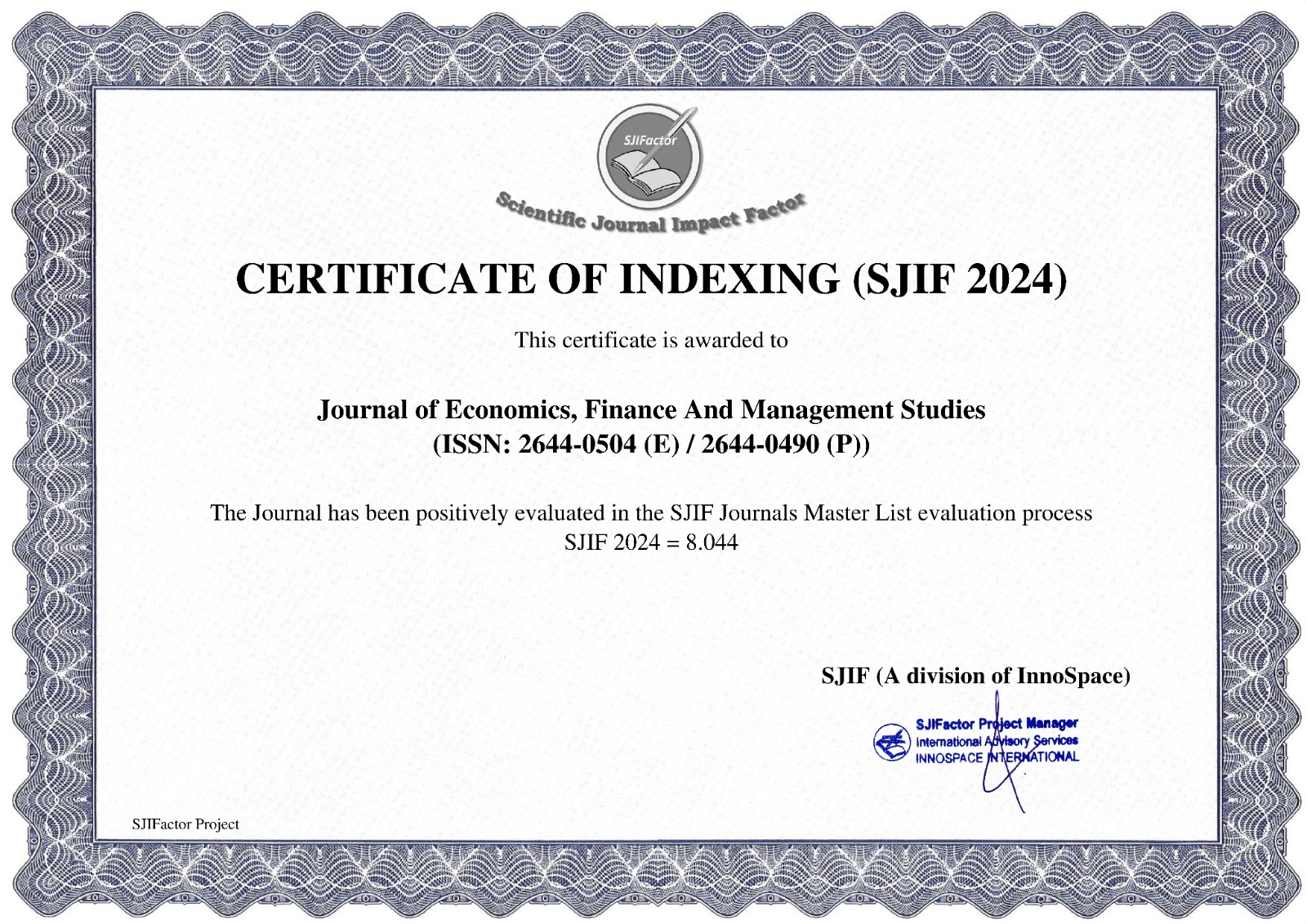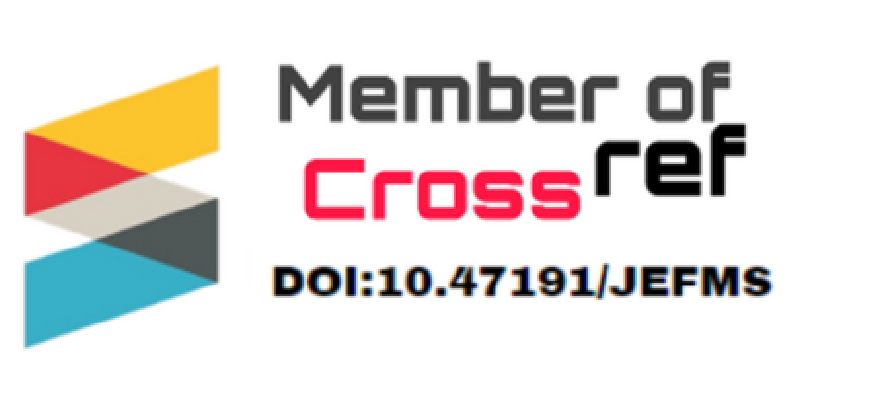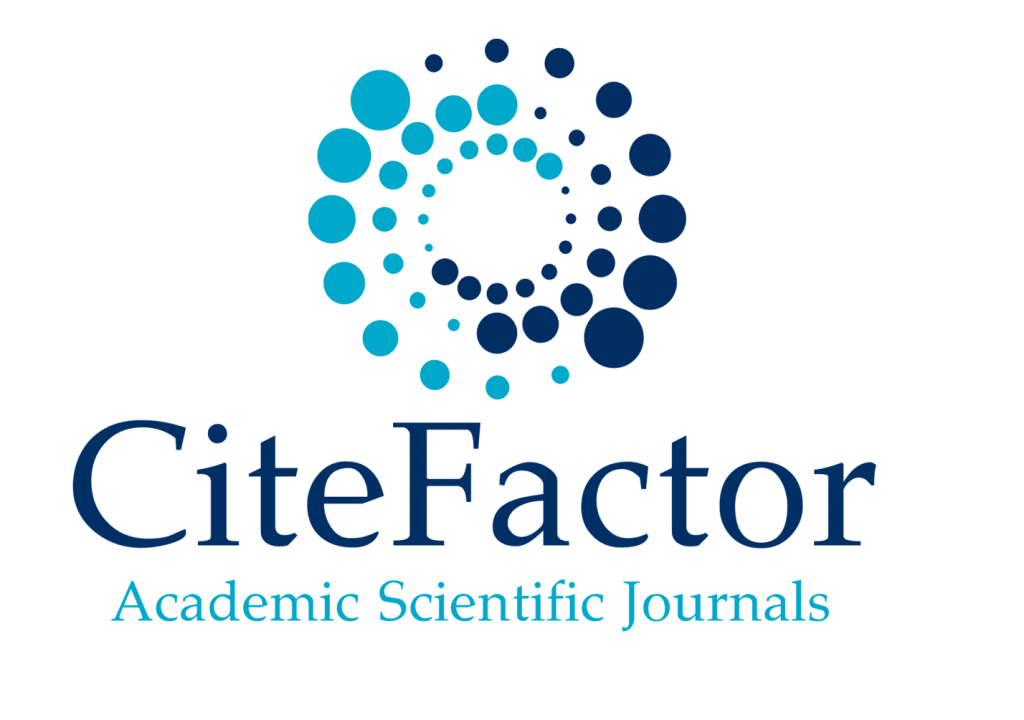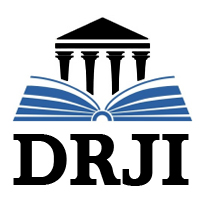Sustainable Development of Textile and Apparel Supply Chain for Garment Exporting Companies in Vietnam in the Current Green Context
Thi Cam Loan Nguyen
University of Finance – Marketing, Vietnam
https://doi.org/10.47191/jefms/v8-i3-18ABSTRACT:
The textile and apparel supply chain in Vietnam is quite complex and this is an economic sector leading to a lot of environmental damage. Therefore, "greening" for sustainable development of the textile and apparel industry is becoming a trend, a call from customers around the world. When customers have strict requirements, requiring garment products to meet "sustainable" criteria, garment exporting companies in Vietnam cope with challenges. The article analyzes the advantages and challenges of garment export companies in Vietnam when participating in the global supply chain in the current green context. Recommendations are then proposed for garment export companies, the Vietnam Textile and Apparel Association and the Government to develop the sustainable textile and apparel supply chain, facilating garment export companies to improve their capacity when participating in the chain.
KEYWORDS:
sustainability, supply chain, textile and apparel, garment exporting companies, greening
REFERENCES:
1) Aslam, M. (2019). US-China trade disputes and its impact on ASEAN. Transnational Corporations Review, 11(4), 332–345. https://doi.org/10.1080/19186444.2019.1691410
2) Aziz Khan, M. M., Alam, J., Saha, S. & Sayem, A. (2024). Critical barriers to adopt sustainable manufacturing practices in medium-sized ready-made garment manufacturing enterprises and their mitigation strategies. Heliyon, 10(20). https://doi.org/10.1016/j.heliyon.2024.e39195
3) Binh, Đ. T., & Trang, T. V. (2021). Effects of institutional pressures on environmentally friendly export strategies, supply chain coordination and competitive advantage in garment firms (in Vietnamese: Ảnh hưởng của áp lực thể chế đến chiến lược xuất khẩu thân thiện môi trường, hợp tác trong chuỗi cung ứng và lợi thế cạnh tranh tại các doanh nghiệp dệt may). Journal of Economics and Development. 288, 33-42
4) Caniato, F., Caridi, M., Crippa, L., Moretto, A., 2015. Environmental sustainability in fashion chains: An exploratory case based research. Int. J. Prod. Econ. 135, 659–670
5) Carter, C.R., & Rogers, D.S. (2008). A Framework of Sustainable Supply Chain Management: Moving Toward New Theory. International Journal of Physical Distribution and Logistics Man. 38(5), 360-387
6) Center for WTO and International Trade - Vietnam Chamber of Commerce and Industry WTO và hội nhập (2024). Free trade agreements. https://wtocenter.vn/fta
7) Centre for the Promotion of Imports (CBI) – Ministry of Foreign Affairs of the Netherlands. (2021). The sustainable transition in apparel and home textiles. https://www.cbi.eu/market-information/apparel/sustainable-transition-apparel-and-home-textiles
8) Diabat, A., Kannan, D., Mathayazhagan, K. (2014). Analysis of enablers for implementation of sustainable supply chain management-A textile case. J. Clean. Prod. 83, 391–403.
9) European Parliament (2025). Deal on new EU rules to reduce textile and food waste. https://www.europarl.europa.eu/news/en/press-room/20250217IPR26975/deal-on-new-eu-rules-to-reduce-textile-and-food-waste
10) Gardas, B.B., Raut, R.D., Narkhede, B., 2018. Modelling the challenges to sustainability in the textile and apparel (T & A) sector: A Delphi-DEMATEL approach. Sustain. Prod. Consump. 15, 96–108.
11) Goto, K. (2011). Competitiveness and decent work in Global Value Chains: substitutionary or complementary? Development in Practice, 21(7), 943–958. https://doi.org/10.1080/09614524.2011.590886
12) Government (2022). Development Strategy for Vietnam’s Textile, Garment, and Footwear Industry until 2030 with a vision to 2035 (in Vietnamese: Chiến lược phát triển ngành Dệt May và Da Giày Việt Nam đến năm 2030 tầm nhìn đến năm 2035) dated 29/12/2022. https://vanban.chinhphu.vn/?pageid=27160&docid=207102
13) International Trade Center - Intracen. (2024). Trade statistics. https://www.trademap.org/Country_SelProductCountry_TS.aspx?nvpm=1%7c704%7c%7c%7c%7c61%7c%7c%7c2%7c1%7c1%7c2%7c2%7c1%7c2%7c1%7c1%7c1
14) International Labour Organization (ILO) and International Finance Corporation (IFC) (2023) Viet Nam Annual Report 2023. https://betterwork.org/wp-content/uploads/BWV_AnnualReport_2023_ENG_v8.pdf
15) Inverto (2025). Is nearshoring a suitable strategy for your fashion brand? https://www.inverto.com/en/insights/is-nearshoring-a-suitable-strategy-for-your-fashion-brand
16) Jessie Yeung (2022). US bans imports from China’s Xinjiang region over forced labor concerns. https://edition.cnn.com/2022/06/21/us/us-import-ban-xinjiang-goods-forced-labor-china-intl-hnk/index.html?
17) LaLonde, B. J., & Masters, J. M. (1994). Emerging Logistics Strategies: blueprints for the next century identifying key logistics strategies. International Journal of Physical Distribution & Logistics Management, 24(7), 35–47.
18) Lambert, D. M., Stock, J. R., & Ellram, L. M. (1998). Fundamentals of Logistics Management. Irwin/McGraw-Hill.
19) Linh, T.T. & Binh, Đ. Đ. (2024). The factors influencing the sustainable export development of Vietnam’s textile and apparel to European Union (in Vietnamese: Các nhân tố ảnh hưởng đến phát triển xuất khẩu bền vững hàng dệt may của Việt Nam sang EU). Journal of Economics and Development, 322, 29–39
20) Mentzer, J. T., DeWitt, W., Keebler, J. S., Min, S., Nix, N. W., Smith, C. D., & Zacharia, Z. G. (2001). Defining supply chain management. Journal of Business logistics. Journal of Business Logistics, 22(2), 1–25.
21) Ministry of Industry and Trade of Vietnam (2023). RCEP creates new growth driver for Vietnam's trade. https://vntr.moit.gov.vn/news/rcep-creates-new-growth-driver-for-vietnams-trade
22) Papon, A. I., Nabi, Md. N., & Parvin, M. (2017). Impacts of Political Instability on Garments Productions & Productivity: A Study on a group of Textile industries in Bangladesh. International Journal of Scientific & Engineering Research, 8(4), 535–551. https://doi.org/10.14299/ijser.2017.04.003
23) Purwono, R., Heriqbaldi, U., Esquivias, M. A., & Mubin, M. K. (2022). The American–China Trade War and Spillover Effects on Value-Added Exports from Indonesia. Sustainability, 14(5), 3093. https://doi.org/10.3390/su14053093
24) Reuter (2024). https://www.reuters.com/business/retail-consumer/hm-speeds-up-shift-regional-supply-chains-amid-tariff-threat-2025-01-30/
25) Vietnam textile & apparel association - VITAS. 2024. Vietnam textile and garment industry development strategy to 2030, vision to 2035. http://www.vietnamtextile.org.vn/major_p1_1-1_2-2_3-687_4-6611_9-2_11-10_12-15_13-170.html
26) Vietnam National Textile and Garment Group - Vinatex. (2024). PD&B Realizing the Strategic Goal of “One-stop Destination” & Forming a Strong Knitted Textile Chain. https://vinatex.com/pdb-realizing-the-strategic-goal-of-one-stop-destination-forming-a-strong-knitted-textile-chain/
27) Vietnam customs (2024). Preliminary assessment of Vietnam international merchandise trade performance in the whole year of 2023. https://www.customs.gov.vn/index.jsp?pageId=2281&aid=194162&cid=4208
28) Vietnam News (2024). Vietnamese textile industry could benefit from disruptions in Bangladesh, but long-term strategies remain crucial. https://vietnamnews.vn/economy/1661640/vietnamese-textile-industry-could-benefit-from-disruptions-in-bangladesh-but-long-term-strategies-remain-crucial.html
29) Vietnam plus (2023). Vietnam continues to show strong commitments to climate actions. https://en.vietnamplus.vn/vietnam-continues-to-show-strong-commitments-to-climate-actions-post271961.vnp
30) Zejjari, I., & Benhayoun, I. (2024). The use of artificial intelligence to advance sustainable supply chain: retrospective and future avenues explored through bibliometric analysis. Discover Sustainability, 5(1). https://doi.org/10.1007/s43621-024-00364-6
















